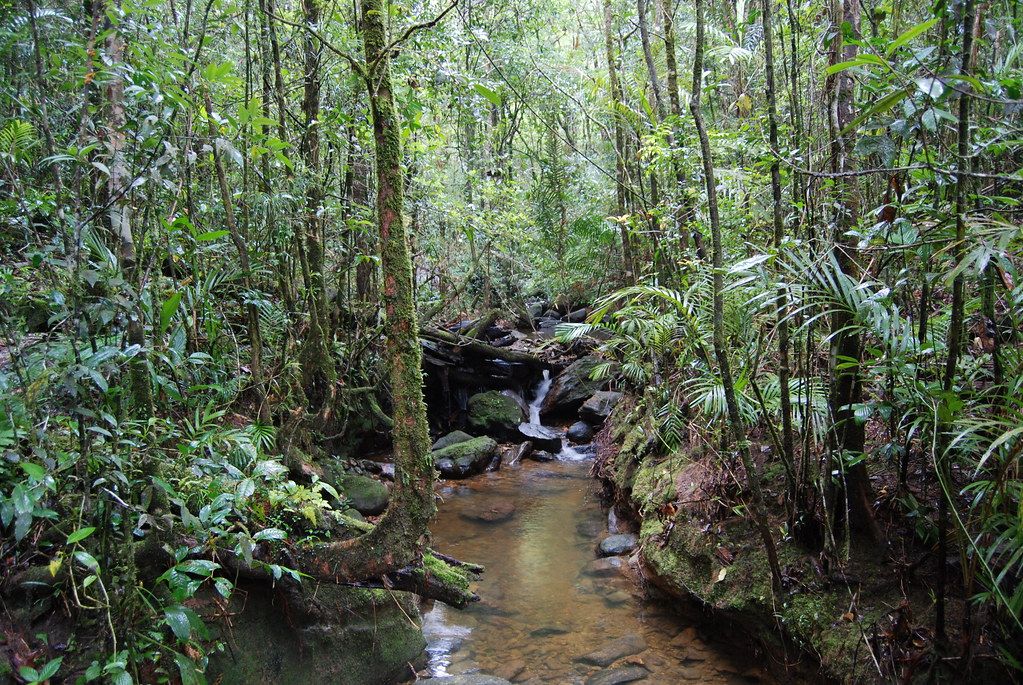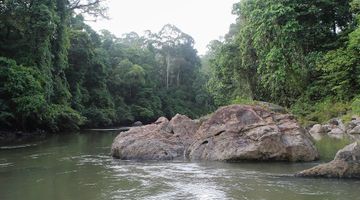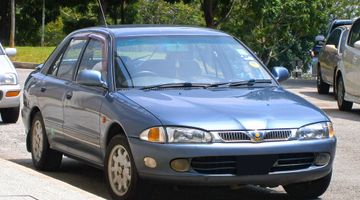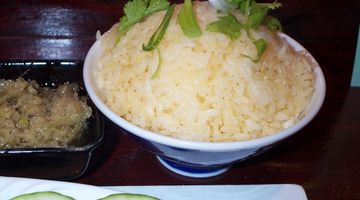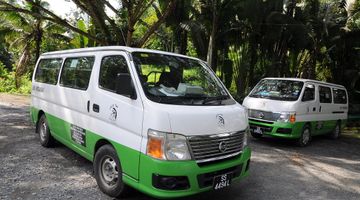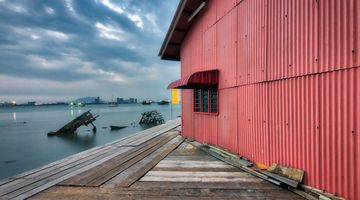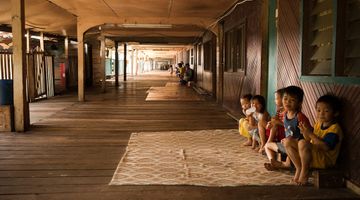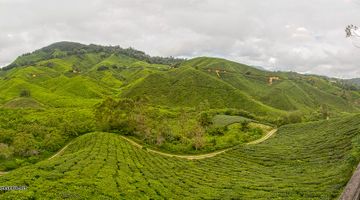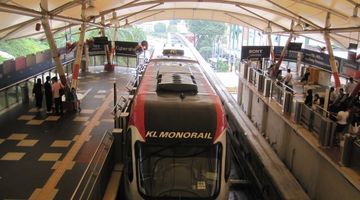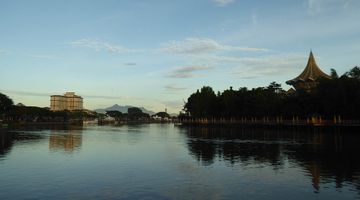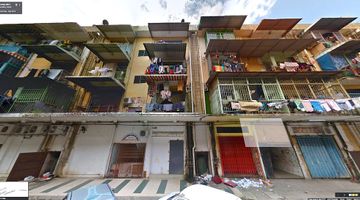Kinabalu National Park Malaysia – Travel Guide
In a nutshell
Nominated as Malaysia’s very first UNESCO Heritage Site, Kinabalu Park is one of the best destinations for nature-adoring travellers and those who long to summit the misty peaks of a mountain that is rich in history and wildlife.
Why go to Kinabalu Park
“The mountains are calling and I must go.” Mount Kinabalu calls out in the distance of the Kinabalu Park with its impressive silhouette and promise of breathtaking views and its splendid assortment of plant and animal life.
Climbing Mount Kinabalu is hands down the top reason to visit this park and the 4000 meter elevation is the focal point that makes it one of the top tourist spots in all of Malaysia.
For lovers of The Great Outdoors, Kinabalu Park features a complete ecological system that is incomparable to anywhere else in the world. Home to six unique vegetation regions, over 1000 species of orchids, pan-tropical flora, flora from China, Australia, Malaysia as well as the Himalayas, this park is a must visit for nature enthusiasts. The hike to the peak of the famous mountain is usually completed within two days; with the second day starting at 2am to guarantee hikers the opportunity of witnessing the astounding sunrise views before the mid-morning mist obscures the magic.
For visitors who do not want to commit to the Mount Kinabalu climb, there are plenty of quieter and more relaxing walks and jungle trails within the park itself that reward explorers with tranquillity, bird song and nature at its finest. A visit to the luscious botanical gardens is also a fine way to spend an afternoon as well as an outing to the small park museum.
When to go to Kinabalu Park
For those who are visiting with the primary motivation of wanting to climb, the best time to visit is around March to May with temperatures being moderate and rainfall low. The later months, such as November and December are to be avoided as these months have very high levels of rainfall as well as below freezing temps near the peak of Mount Kinabalu.
Where to stay in Kinabalu Park
For those needing accommodation within the Kinabalu Park itself, it is important to note that all bookings need to be done through Sutera Sanctuary Lodges via email, fax or telephone. It is also worth stating that for those who are a budget, accommodation within the park’s parameters are a great deal more expensive that the lodges, resorts and cabins on the outskirts. Lodging options, both in and out of the park, range from simple, basic rooms to exclusive and luxurious private chalets with gorgeous views of the surrounding scenery.
Solo-travellers and couples will have no shortage of sports to rest their heads and if traveling in a group or with a family in Kinabalu Park, the room rates per head tend to be excellent value for money. For those taking part in the overnight trek to the summit, camping is prohibited on the mountain and all hikers need to spend the night in approved accommodation within Kinabalu Park and at Laban Rata.
Extremely important information for climbers, as of September 2017 the Tourism and Culture Ministry of Malaysia has implemented a MYR 10 flat rate fee (Malaysian Tourism Tax) for every room booked per night on the mountain regardless of the star-level of the accommodation.
Where to eat in Kinabalu Park
Nothing stirs up a healthy appetite like time spent outdoors and with all the walking and climbing that visitors of Kinabalu will no doubt experience, knowing where and what to eat is key.
There are a number of restaurants and eateries at the entrance gate of the park as well as at Laban Rata. The price of food at Laban Rata is moderately more expensive as a result of the labor costs of all food ingredients needing to be carried to the top by mountain porters.
Most of the restaurants within the park are also more expensive than on the outside, however, the majority of the climbing packages include meals in the total cost and so those on a budget can save some money in this way. With the plentiful selection of eating options, visitors will be able to dine at simple, basic eateries and cafes, as well as upmarket dining alternatives while visiting this beautiful UNESCO site.
For those looking to save money, it may be a good idea to bring along tea sachets, biscuits, dry noodles, energy-bars and other lightweight and energy-abundant foods before entering the park. Some accommodations provide kettles where you can boil water for free while others may charge MYR 1 for a cup of hot water.
There is also an excellent night market across from the highway at the riverside car park. Local snacks, drinks and dishes are on offer at very affordable prices. Hakka Food Court is also well worth the trip for those wanting to fill up and stock up on hearty and tasty meals. A little way out of town, this food court can be located a half a kilometre along the road toward Ranau Hospital, past the tea statue heading towards Poring. This is also a great spot for those on the hunt for affordable beers.
Entrance fees
Entrance fees into the park are MYR 3 for Malaysian adults, MYR 1 for Malaysian children, MYR 15 for non-Malaysian adults, and MYR 10 for non-Malaysian children.
For those wanting to tackle the climb up the mountain, a climbing permit will set you back MYR 50 for Malaysian adults, MYR 30 for Malaysian children, MYR 200 for non-Malaysian adults and MYR 80 for non-Malaysian children. A guide is also compulsory for those wanting to climb to the top, as well as a non-negotiable Climbing Insurance Fee of MYR 7 per person.
How to get around Kinabalu Park
Due to zero road access on offer to Laban Rata or to the summit of Mount Kinabalu, this means that the majority of getting around within Kinabalu Park is done by putting one foot in front of the other.
For travellers needing transport around Mount Kinabalu, the transport centre within the park can organize a ride to Timpohon (where hikers begin the climb), as well as a pickup on the way back. The ride will cost around MYR 17 for a one-way trip.
Shuttle vans are available for those staying within the park overnight and taxis can also be arranged at the unofficial taxi rank across from the park entrance. Prices are set per trip regardless of how many people are being transported so sharing a lift with another traveller may be helpful. Taxi fares are negotiable but listed as the following: Kundasang MYR 30, Ranau MYR 60 and Poring MYR 100.
How to get to and from Kinabalu Park
The entrance of Kinabalu is very simple to get to from Kota Kinabalu and there are plentiful buses, minivans and shared taxis that ply this two-hour route daily. Those wanting to hop on a bus should head to the North City Bus Terminal at Inanam and catch the next-departing bus. Tickets will cost around MYR 15 and it might be helpful to know that buses bound for Ranau, Sandakan or Tawau will also pass the entrance of the park should these buses be leaving earlier and if spending the full fare is not an issue.
Minivan and taxis that drive this route can be found leaving from Merdeka Square between 7:30am and 5pm and will depart for each journey as the van or shared-taxi is full. Minivans also leave from the Long Distance Bus Station, close to the night market in the city centre and costs roughly MYR 20 for a one-way journey. Alternatively, travellers can also get to the park by renting a car from one of the many car-rental companies conveniently located at the airport, otherwise pre-organized transportation from one of the local tour operators is also an option.
Getting to the park from Sandakan is also a possibility via bus as well as minivan. The trip takes around 4 hours and costs around MYR 35.
Once your stay at Kinabalu Park has come to an end, travellers can easily flag down a passing bus or minivan from the main road from around 7am to 8pm. A trip back to Kota Kinabalu will cost around MYR 20.
Is Kinabalu Park a safe place to visit?
Fortunately Kinabalu Park is a very safe destination for travellers with the biggest worry being the climb to the summit of Mount Kinabalu. This hike is a physical challenge and climbers need to be mindful of the dangers involved especially during rainy season and bad weather. Top physical shape is paramount as is plenty of drinking water, warm clothing and a headlamp.

